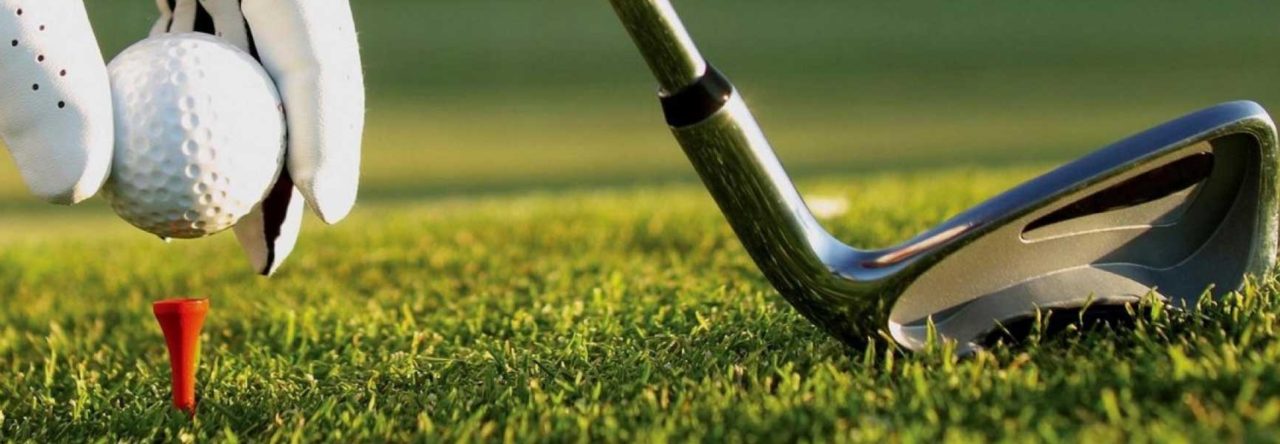A great golf swing looks effortless but even experienced players struggle with small golf swing mistakes that throw off their shots. The good news? Most mistakes have simple fixes. With a few adjustments, you can hit the ball cleaner, straighter, and with more confidence.
Below are some of the most common golf swing mistakes and easy ways to correct them.
The Death Grip – Holding the Club Too Tight
The first golf swing mistake is gripping the club too tightly creating tension in your arms and wrists and making it harder to swing freely. Many golfers squeeze the club as if they’re holding on for dear life, thinking it gives them more control. In reality, it does the opposite.
- Fix: Hold the club with a firm but relaxed grip. A good test is to grip it as if you’re holding a tube of toothpaste without squeezing any out. A lighter grip helps create a smoother, more natural swing.
- Drill to Try: Before taking a shot, shake your hands to release tension. Then, grip the club with enough pressure to maintain control, but not so much that your hands feel stiff.
Poor Posture – Slouching or Standing Too Tall
Another golf swing mistake is forgetting to set your posture for your swing. If you’re hunched over, you’ll restrict your turn. If you stand too tall, you’ll lose balance and power.
- Fix: Stand with a slight bend at your hips, keeping your back straight and arms hanging naturally. Think of an athletic stance, like a basketball player getting ready to move.
- Drill to Try: Stand in front of a mirror, place a club across your shoulders, and practice tilting forward from your hips without bending your back. This helps you find the right posture for a powerful, balanced swing.
Over-Swinging – Trying to Crush the Ball
It’s tempting to swing as hard as possible, thinking it will send the ball farther. In reality, overswinging usually leads to off-center hits and a loss of control.
- Fix: Focus on smooth rhythm instead of power. A controlled, balanced swing produces better contact and more consistent distance.
- Drill to Try: Try hitting 10 shots at just 50% of your usual power. You’ll be surprised at how solid your contact feels, and over time, your full-speed swings will feel more controlled.
Slicing – The Ball Curves to the Right (for Right-Handed Golfers)
A slice is one of the most common swing issues. It happens when the clubface is open at impact, causing the ball to spin right. This often comes from a weak grip or an outside-to-inside swing path.
- Fix: Strengthen your grip slightly so your lead hand (left hand for right-handed golfers) shows two or three knuckles. Also, work on swinging from inside the target line.
- Drill to Try: Set up two tees just outside your ball, creating a “gate”. Practice swinging through the gate without hitting the tees. This encourages an inside-out swing path, helping to reduce your slice.
Hooking – The Ball Curves Too Much to the Left
A hook happens when the clubface is too closed at impact, usually from over-rotating your hands.
- Fix: Keep your grip neutral and avoid flipping your wrists too early in the swing. Focus on keeping your hands steady through impact.
- Drill to Try: Hold the club with your normal grip, but before swinging, check your knuckles. If you see too many on your lead hand, slightly weaken your grip to help keep the clubface neutral at impact.
Lifting Your Head Too Early
Many golfers peek up too soon to see where the ball is going, causing them to top the shot or miss it completely.
- Fix: Keep your eyes on the ball until after contact. Let your shoulder pull your head up naturally instead of forcing it.
- Drill to Try: Place a coin under the ball and focus on the coin instead of the ball itself. This keeps your head down longer and prevents early movement.
Losing Balance During the Swing
Another golf swing mistake is swaying too much or falling back after your shot which leads to inconsistent contact.
- Fix: Stay centered over the ball and transfer your weight smoothly from your back foot to your front foot. Your finish should feel controlled, not off-balance.
- Drill to Try: Practice swinging with your feet close together. This forces you to maintain balance and avoid excessive movement.
Mindset and Practice Habits Matter Too
Even with the best swing mechanics, inconsistency can come from rushing shots, second-guessing your technique, or overthinking. The best golfers stay relaxed and focus on one simple thought before swinging.
Fix: Before each shot, take a deep breath and pick a small target to focus on. A clear mind leads to a smoother swing.
Final Thoughts
Fixing your golf swing doesn’t mean changing everything overnight. Small, steady improvements lead to better consistency and lower scores. Work on one issue at a time, be patient, and soon you’ll start seeing results on the course.
If any of these mistakes sound familiar, pick one to focus on and practice the drills. Golf is all about small adjustments that add up over time. Keep at it, and your swing will feel more natural and reliable in no time.
About the Author:
Daniel is a passionate golf writer and enthusiast who loves helping players improve their game. He shares practical tips, drills, and expert insights at Matt Guides. When he’s not writing, you’ll find him fine-tuning his swing on the course.





![How Many Degrees is a Sand Wedge // Explained in Detail [2019 Update]](https://i0.wp.com/www.bencranegolf.com/wp-content/uploads/2019/04/How-Many-Degrees-is-a-Sand-Wedge.jpg?resize=301%2C301&ssl=1)



